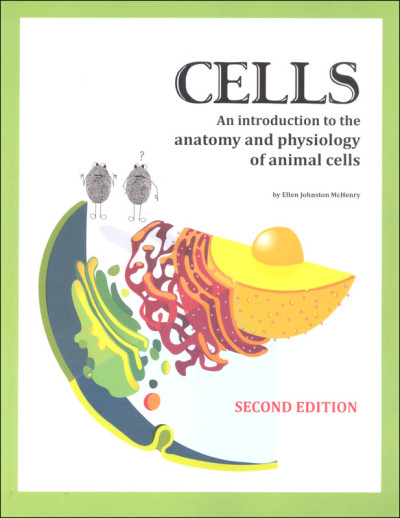We use cookies to make your experience better. To comply with the new e-Privacy directive, we need to ask for your consent to set the cookies. Learn more.
Cells - An Introduction to the Anatomy and Physiology of Animal Cells 2nd Edition
Topics covered: The history of the discovery of cells, the molecule structure of phospholipids and phospholipid membranes, the cytoskeleton and its functions, motor proteins, ATP and the mitochondria, how the electron transport chain works, amino acids, proteins, DNA discovery, translation, transcription, mRNA, tRNA, ribosomes, chaperone proteins, lysosomes, enzymes, endoplasmic reticulum, Golgi bodies, docking proteins and protein synthesis inside endoplasmic reticulum, the structure of the nucleus, the nucleolus and how ribosomes are made, histones, nucleosomes, rRNA, cell metabolism, overview of digestion, chylomicrons, fatty acids, glucose, the Krebs cycle, acetyl-CoA, phagocytosis, pinocytosis, exocytosis, glycolysis, mitosis, meiosis, and overview of common body cells such as epithelial (skin, capillary, goblet, villi), muscle cells, neurons, bone cells and blood cells.
Length of student text: 102 pages (some color diagrams included)
Items listed in this section tend to be complete science programs with a teacher and student component, requiring few supplements besides science supplies.
Author Ellen McHenry is known for her straightforward approach to a variety of science topics. This curriculum is full of age-appropriate explanations, hands-on activities, and the familiar Ellen McHenry fingerprint characters and cartoons. The author discusses the difference between observable facts and inference, focusing on the facts. Courses are well-written, allowing children to understand more complex topics easily. Student activities vary and may include pencil-and-paperwork (like word puzzles or quizzes), internet links or a hands-on project. Illustrations are a mix of black and white, and color.
One book is required for the course, and includes the reproducible Student Text with activities , and a Teacher Section. Additional Student Books are available for most courses. This is a great option for parents/teachers with multiple students-like in a co-op or classroom. Activity pages in the core book are reproducible for families or single classroom use. The author has set up a YouTube® channel with a myriad of short videos to accompany the courses. Worth mentioning, the courses are completely doable without this bonus internet content. An exceptional science option for upper elementary and middle school ages to learn topics with more depth compared to many other science programs.
| Product Format: | Softcover Book |
|---|---|
| Brand: | Ellen McHenry's Basement Workshop |
| Grades: | 5-9 |
| ISBN: | 9781737476344 |
| Length in Inches: | 11 |
| Width in Inches: | 8.5 |
| Height in Inches: | 0.5 |
| Weight in Pounds: | 0.9 |

